#Wheel of no communication
Explore tagged Tumblr posts
Text
I'm curious the extent to which Robert Jordan intended this (I think he probably did), but the in-universe narrative of "men and women cannot possibly understand each other" is deeply undermined by the fact that you, the reader, are extremely likely to identify as male or female, and are capable of understanding the motivations of both male and female characters.
The reason I think Jordan knew this was not only the effort made to have the characters motives be explicable when you're in their heads, but to have these communication difficulties go away the second the characters talked to each other and explained what was going on with them.
I think more than that, Jordan feels like he thought a lot of culture around masculine/feminine mystique was silly and harmful. Not only because it hinders good communication (Jordan does not agree that "not explaining stuff" is generally a good thing), but also because it leads to other harmful behaviors being swept up in the umbrella. Think of the number of times Elayne, Nynaeve, and the Aes Sedai are being awful to Mat, who treats it as "this is women being awful and inscrutible" when it's really them just being arrogant and awful. Or Mat being flippant and a jerk (in part as a defensive thing) being generalized to an "all men are like this" when it's really "Nynaeve and Mat get along like two cats in a sack that is on fire".
Does Jordan have some weird gender essentialism in his books? Definitely. But he also has far less than people credit to him, if you listen to the characters and not the subtext (or even text).
238 notes
·
View notes
Text
THE SABBATS








#fyp#fypシ#fypシ゚viral#fypage#fyppage#tumblr fyp#witchcraft#witches#witch#witchcore#witch community#witchy things#sabbats#imbolc#ostara#beltane#litha#lammas#mabon#samhain#yule#wheel of the year#information#helpful#occult#satanist
5K notes
·
View notes
Text









Witchy summer
#Litha#ivana kupala night#kupala#ivana kupala#summer#witchy#witchy things#witchyvibes#witches#witch#whimsigoth#whimsigothic#witchythings#moon#whimsical#witchcraft#witch aesthetic#witch community#witchcraft community#witches of tumblr#magick#pagan#wheel of the year#summer solstice#summertime#summer witch#tarot#moodboard#green witch#green witchcraft
4K notes
·
View notes
Text









×/×/× ×/× ×/×/×
#text#autismposting#stim#my edits#agere stim#agere#age regression#age regressor#age regression blog#agere blog#agere community#sfw agere#stim toys#clowncore#clowncore stim#clown stim#plushieposting#clownposting#toy stim#toycore stim#ferris wheel stim#slime stim#candy stim#deco slime stim#crunchy slime stim#polly pocket stim#kidre#kid regression#kid regressor#kidre stim
1K notes
·
View notes
Text
September 2024 Witch Guide
New Moon: September 2nd
First Quarter: September 11th
Full moon: September 17th
Last Quarter: September 24th
Sabbats: Mabon- September 22nd
September Harvest Moon
Also known as: Autumn Moon, Child Moon, Corn Harvest Moon, Falling Leaves Moon, Haligmonath, Leaves Turning Moon, Mating Moon, Moon of Brown Leaves, Moon When Dear Paw the Earth, Rutting Moon, Singing Moon, Wine Moon, Witumanoth & Yellow Leaf Moon
Element: Earth
Zodiac: Virgo & Libra
Nature spirts: Trooping Faeries
Deities: Brigid, Ceres, Chang-e, Demeter, Freya, Isis, Depths & Vesta
Animals: Jackal & snake
Birds: Ibis & sparrow
Trees: Bay, hawthorn, hazel & larch
Herbs: Copal, fennel, rye, skullcap, valerian, wheat & witch hazel
Flowers: Lily & narcissus
Scents: Bergamot, gardenia, mastic & storax
Stones: Bloodstone,carnelian, cat's eye, chrysolite, citrine, iolite, lapis lazuli, olivine, peridot, sapphire, spinel(blue), tourmaline(blue) & zircon
Colors: Browns, dark blue, Earth tones, green & yellow
Issues, intentions & powers: Confidence, the home, manifestation & protection
Energy: Balance of light & dark, cleaning & straightening of all kinds, dietary matters, employment, health, intellectual pursuits, prosperity, psychism, rest, spirituality, success & work environment
The full Moon that happens nearest to the fall equinox (September 22nd or 23rd) always takes on the name “Harvest Moon.” Unlike other full Moons, this full Moon rises at nearly the same time—around sunset—for several evenings in a row, giving farmers several extra evenings of moonlight & allowing them to finish their harvests before the frosts of fall arrive.
• While September’s full Moon is usually known as the Harvest Moon, if October’s full Moon happens to occur closer to the equinox than September’s, it takes on the name “Harvest Moon” instead. In this case, September’s full Moon would be referred to as the Corn Moon.
This time of year—late summer into early fall—corresponds with the time of harvesting corn in much of the northern United States. For this reason, a number of Native American peoples traditionally used some variation of the name “Corn Moon” to refer to the Moon of either August or September.
Mabon
Known as: Autumn Equinox, Cornucopia, Witch's Thanksgiving & Alban Elved
Season: Autumn
Element: Air
Symbols: Acorns, apples, autumn leaves, balance, berries, corn, cornucopia( Horn of Plenty), dried seeds, equality, gourds, grains, grapes, ivy, pine cones, pomegranates, vines, wheat, white roses & wine
Colors: Blue, brown, dark red, deep gold, gold, indigo, leaf green, maroon, orange, red, russet. Violet & yellow
Oils/Incense: Apple, apple blossom, benzoin, black pepper, hay/straw, myrrh, passion flower, patchouli, pine, red poppy & sage
Animals: Dog & Wolf
Birds: Goose, hawk, swallow & swan
Stones: Agate, amethyst, carnelian, lapis lazuli, sapphire, yellow Agate & yellow topaz
Food: Apples, blackberries, blackberry wine, breads, carrots, cider, corn, cornbread, grapes, heather wine, nuts, onions, pomegranates, potatoes, squash, vegetables, wheat & wine
Herbs/Plants: Benzoin, bramble, corn, ferns, grains, hops, ivy, milkweed, myrrh, sage sassafras, Salomon's seal, thistle, tobacco & wheat
Flowers: Aster, heather, honeysuckle, marigold, mums, passion flower, rose
Trees: Aspen, cedar, cypress, hazel, locust, maple, myrtle oak & pine
Goddesses: Danu, Epona, Inanna, Ishtar, Modron, Morgan, The Morrigan, Muses, Pomona, Persephone, Sin, Sophia & Sura
Gods: Bacchus, Dionysus, Dumuzi, Esus, The Green Man, Hermes, Mannanan, Thor & Thoth
Issues, Intentions & Powers: Accomplishment, agriculture, balance, goals, gratitude & grounding
Spellwork: Balance, harmony, protection, prosperity, security & self-confidence
Activities:
•Scatter offerings in a harvested fields & Offer libations to trees
• Decorate your home and/or altar space for fall
• Bake bread
• Perform a ritual to restore balance and harmony to your life
• Cleanse your home of negative energies
• Pick apples
• Collect fall themed things from nature like acorns, changing leaves, pine cones, ect)
• Have a dinner or feast with your family and/or friends
• Set intentions for the upcoming year
• Purge what is no longer serving you & commit to healthy changes
•Take a walk in the woods
• Enjoy a pumpkin spice latte
• Donate to your local food bank
• Gather dried herbs, plants, seeds & pods
• Learn something new
• Make wine
• Fill a cornucopia
• Brew an apple cinnamon simmer pot
• Create an outdoor Mabon altar
•Adorn burial sites with leaves, acorns, & pinecones to honor those who have passed over & visit their graves
The name Mabon comes from the Welsh/Brythonic God Mabon Ap Modron, who's name means "Divine/great Son", However,there is evidence that the name was adopted in the 1970s for the Autumn Equinox & has nothing to do with this celebration or this time of year.
• Though many cultures see the second harvest (after the first harvest Lughnasadh) & Equinox as a time for giving thanks before the name Mabon was given because this time of year is traditionally when farmers know how well their summer crops did & how well fed their animals have become. This determines whether you & your family would have enough food for the winter.That is why people used to give thanks around this time, thanks for their crops, animals & food
Some believe it celebrates the autumn equinox when Nature is preparing for the winter months. Night & day are of equal legth & the God's energy & strength are nearly gone. The Goddess begins to mourn the loss she knows is coming, but knows he will return when he is reborn at Yule.
Related festivals:
• Sukkot- Is a Torah-commanded holiday celebrated for seven days, beginning on the 15th day of the month of Tishrei. It is one of the Three Pilgrimage Festivals on which Israelites were commanded to make a pilgrimage to the Temple in Jerusalem. Originally a harvest festival celebrating the autumn harvest, Sukkot’s modern observance is characterized by festive meals in a sukkah, a temporary wood-covered hut, celebrating the Exodus from Egypt.
• Mid-Autumn festival- September 17th
Is also known as the Moon Festival or Mooncake Festival. It is a traditional festival celebrated in Chinese culture, similar holidays are celebrated by other cultures in East & Southeast Asia. It is one of the most important holidays in Chinese culture; its popularity is on par with that of Chinese New Year. The history of the Mid-Autumn Festival dates back over 3,000 years. On this day, it is believed that the Moon is at its brightest and fullest size, coinciding with harvest time in the middle of Autumn.
During the festival, lanterns of all size and shapes – which symbolize beacons that light people's path to prosperity & good fortune – are carried & displayed. Mooncakes, a rich pastry typically filled with sweet-bean, egg yolk, meat or lotus-seed paste, are traditionally eaten during this festival. The Mid-Autumn Festival is based on the legend of Chang'e, the Moon goddess in Chinese mythology.
• Thanksgiving- This is a secular holiday which is similar to the cell of Mabon; A day to give thanks for the food & blessings of the previous year. The American Thanksgiving is the last Thursday of November while the Canadian Thanksgiving is celebrated in October
• The Oschophoria- Were a set of ancient Greek festival rites held in Athens during the month Pyanepsion (autumn) in honor of Dionysus. The festival may have had both agricultural and initiatory functions.
-Amidst much singing of special songs, two young men dressed in women's clothes would bear branches with grape-clusters attached from Dionysus to the sanctuary of Athena Skiras & a footrace followed in which select ephebes competed.
Ancient sources connect the festival and its rituals to the Athenian hero-king Theseus & specifically to his return from his Cretan adventure. According to that myth, the Cretan princess Ariadne, whom Theseus had abandoned on the island of Naxos while voyaging home, was rescued by an admiring Dionysus; thus the Oschophoria may have honored Ariadne as well. A section of the ancient calendar frieze incorporated into the Byzantine Panagia Gorgoepikoos church in Athens, corresponding to the month Pyanopsion (alternate spelling), has been identified as an illustration of this festival's procession.
Sources:
Farmersalmanac .com
Llewellyn's Complete Book of Correspondences by Sandra Kines
Wikipedia
A Witch's Book of Correspondences by Viktorija Briggs
Encyclopedia britannica
Llewellyn 2024 magical almanac Practical magic for everyday living
#wheel of the year#harvest moon#September 2024#witch guide#autumn equinox#Mabon#witchblr#wiccablr#paganblr#spirtual#grimoire#book of shadows#witch tips#beginner witch#baby witch#witch community#witchcraft#witchcore#witches of tumblr#tumblr witches#second harvest#moon cycle#witch#witchy stuff#witchy things#witchyvibes#GreenWitchcrafts#moon magic#traditional witchcraft#witches
447 notes
·
View notes
Text





PROTECT TRANS KIDS 🏳️⚧️
#trans skateboarder#trans skateboarding#sk8#girl skaters#girl skateboards#skater girl#independent trucks#spitfire wheels#skateboarding is for everyone#skateboarding is not a crime#trans#transgender#trans pride#transisbeautiful#transgirl#mtf#girlslikeus#mtf hrt#maletofemale#transformation#trans women#trans woman#protect trans kids#trans support#trans solidarity#support the trans community#trans positivity#trans community#trans is beautiful#lgbtqia
413 notes
·
View notes
Text
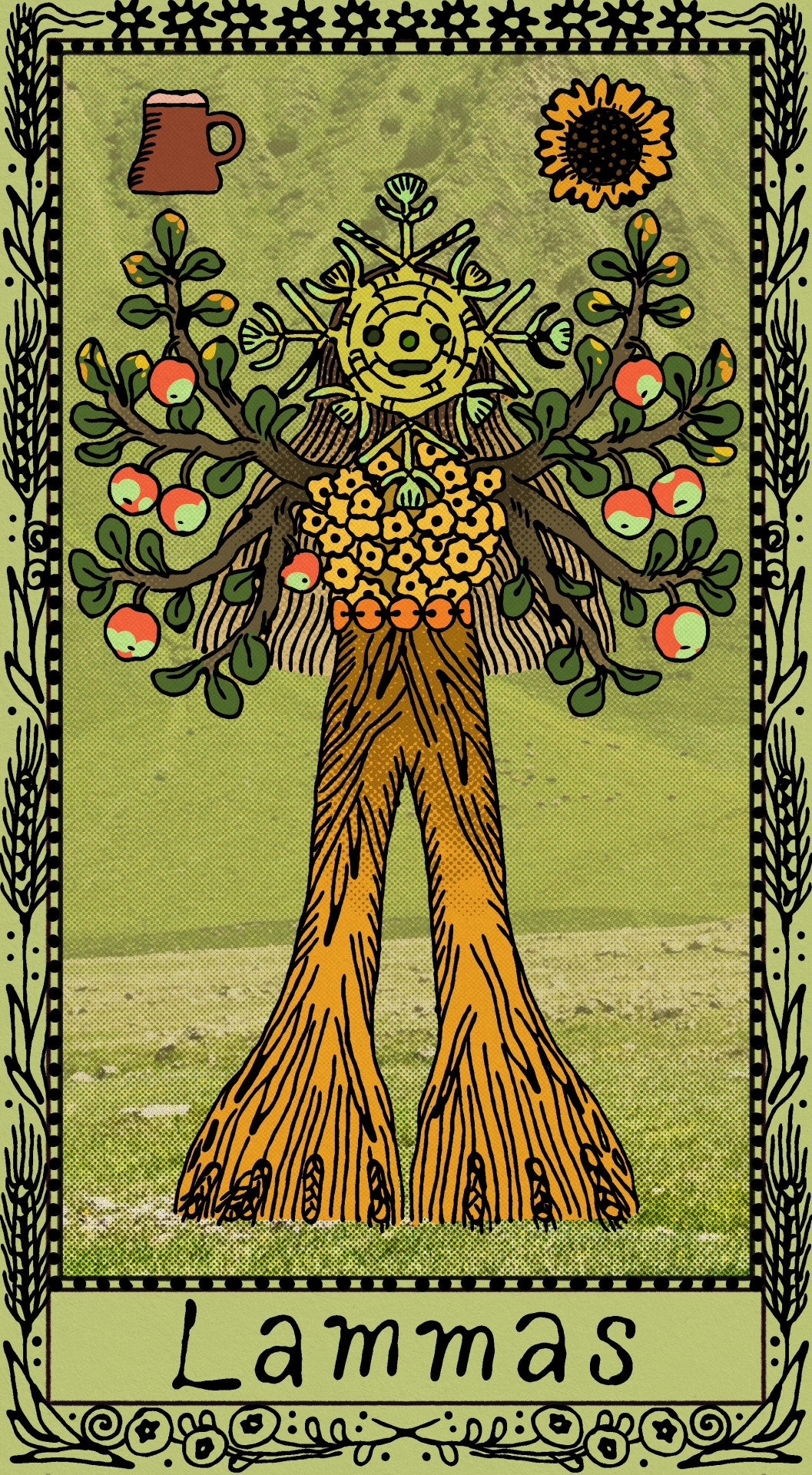
find me here
#lammas#lughnasadh#lughnasa#wheel of the year#harvest season#harvest festival#artists on tumblr#oracle cards#divination cards#witchcraft#witchblr#witch community#art magic#naturecore#goblincore#forestcore#dirtcore
246 notes
·
View notes
Note
I'd love to know what some of the team's favourite indie ttrpgs are (apart from Eureka, of course. Otherwise, it'd be at the top of the list, I expect.)
Yes of course Eureka: Investigative Urban Fantasy, but for non-Eureka indie and small-press games, here are a few of the team's answers
@sirobvious:
Mothership. Hands-down.
@chaospyromancy:
mork borg
@ashweather:
Ash's Picks (AKA the "get more literate in the medium" pack) (Most of these are small- or medium-press not strictly indie but ya know)
Burning Wheel Seventh Sea (1st edition) Fate of the Norns: Ragnarok Mothership Don't Rest Your Head Troika! Hillfolk (aka DramaSystem) Savage Worlds Masks
@theblackwarden:
A Dirty World PATROL: The Trench Raiders Triangle Agency Paranoia Mothership A World of Dew

#mothership rpg#mork borg#triangle agency#savage worlds#masks a new generation#indie ttrpgs#indie ttrpg#ttrpg tumblr#ttrpg community#burning wheel#seventh sea#fate of the norns#troika#don't rest your head#hillfolk#a dirty world#patrol#paranoia#a world of dew#mothership
124 notes
·
View notes
Text
Wheel of Doom QUARTERFINALS

#autism#polls#tournament#autismsummit2024#wheel of doom#abed nadir#community#miles tails prower#sonic the hedgehog
159 notes
·
View notes
Text
Celebrating Samhain

Samhain, pronounced "SAH-win", is the eighth Sabbat and final spoke on the Wheel of the Year. With ancient Celtic origins, Samhain was one of the four fire festivals, and falls at the halfway point between the Autumn Equinox ans Winter Solstice. Opposing Beltane on the Wheel, Samhain also similarly features a 'thinning of the Veil', a time when the barrier between our world and that of spirits and other magickal entities is weakened and easier to cross. While Beltane famously is a strong time to interact with the Fae due to the Veil thinning, Samhain is most known for interactions with spiritual entities, the dead, and ancestors.
Samhain is also known as the third and final Harvest Festival (the first being Lughnasadh, and the second Mabon). The frost is coming, and most of the produce has been collected from the fields and stored away. As people prepared for oncoming harsh weather and lack of food/resources, they had to cut back on everything that wasn't crucial to their survival. Thus, this festival was the time of the animal harvest. All creatures who could not be fed through the harsh Winter were harvested during this time, and celebrated for their sacrifice.
Other names for Samhain and similar celebrations include:
• Halloween
• All Hallow's Eve
• The Witch's New Year
• The Third/Final Harvest
• Calan Gaeaf, "The First Day Of Winter"
• Oiche Shamnhna
• All Soul's Day
• All Saint's Day
• Devil's Night

Common Samhain Traditions
• The Dumb Supper is when a meal is hosted and consumed by the living, but the dead and spirits are invited to participate and given seats and places at the table as a sign of respect. Often the windows are all open during a Dumb Supper to invite the spirits into a home. Sometimes specific spirits or ancestors are invited or the invitation is simply left open to any spirits that wish to attend. The living attendants traditionally eat in silence to honor the spirits and hear their messages.
• Carving Jack-O-Lanterns originally came from the myth of "Stringy Jack", which is an Irish folktale about a man who tricked the Devil and now has to wander the world with a lit piece of coal protected inside a carved turnip. This evolved into people carving their own turnips and potatoes and placing them in windows or doorways to scare away Stringy Jack and other tricky or potentially harmful spirits. Once Irish immigrants came to America, the tradition was continued with pumpkins.
• Trick-Or-Treating is also derived from old Samhain traditions. The Celts believed that by dressing up they were disguising themselves from negative spirits who wandered the Earth on Samhain. In the Middle-Ages, "guising" was when children or impoverished people would dress in costumes and go door-to-door begging for food in exchange for songs or prayers. This practice was known as "souling" and the participants called "soulers". In Ireland, the practice of "mumming" involved dressing up in costumes and going door-to-door to sing in exchange for tasty cakes and baked goods.
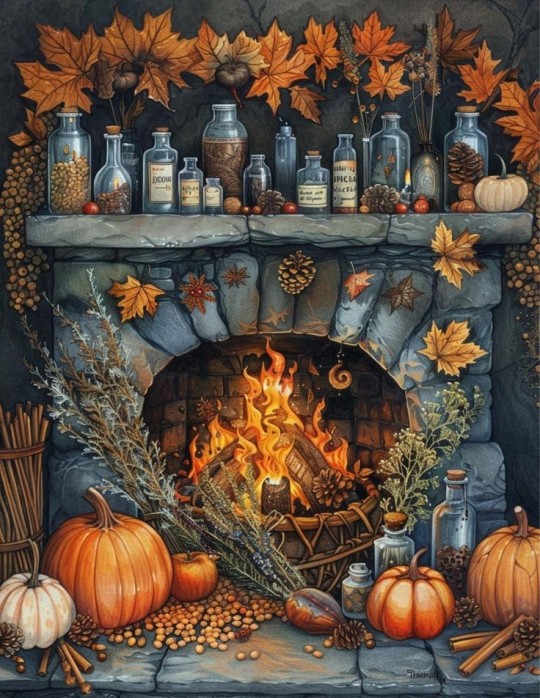
Samhain Correspondences
Colors:
• Black
• Green
• Orange
• Purple
• Red
• Silver
Crystals:
• Black Obsidian
• Bloodstone
• Amethyst
• Black Tourmaline
• Carnelian
• Jasper
• Jet
• Malachite
• Iolite
• Onyx
• Vivianite
• Ruby
• Smokey Quartz
• Garnet
Herbs/Plants:
• Cedar
• Allspice
• Cinnamon
• Hemlock
• Sage
• Rosemary
• Patchouli
• Hazel
• Dittany of Crete
• Bay
• Clove
• Belladonna
• Dragon's Blood
• Wormwood
• Mandrake
• Mugwort
• Snapdragon
• Gourds
• Nutmeg
• Frankincense
• Ginger
• Pine
• Hyssop
• Marigold
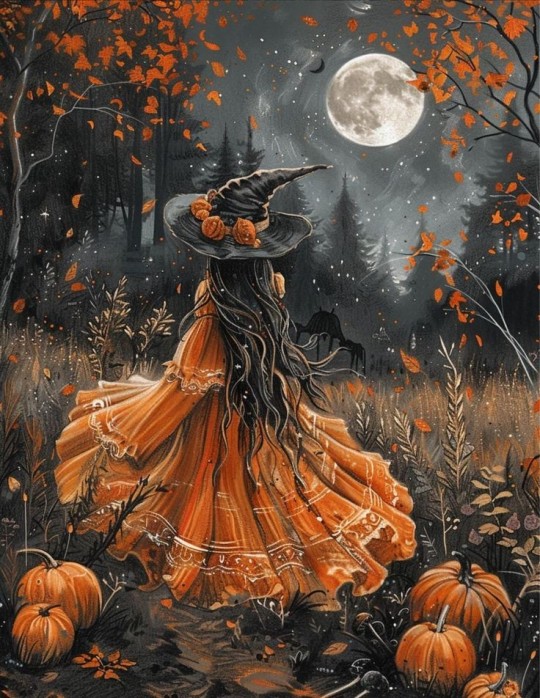
Animals:
• Bats
• Snakes
• Cats
• Spiders
• Scorpions
• Coyotes
• Jackals
• Dogs
• Wolves
• Foxes
• Crows
• Ravens
• Owls
• Rats
• Stags
Food/Drink:
• Pumpkins
• Cider
• Beef
• Chicken
• Pork
• Cranberries
• Turnips
• Potatoes
• Garlic
• Soups/stews
• Pears
• Corn
• Ale
• Apples
• Grain
• Pies
Deities:
• Hekate
• Lucifer
• Anubis
• Loki
• Lilith
• Morrigan
• Nyx
• Hades
• Persephone
• Osiris
• Apollo
• Cerridwen
• Hel
• Freya
• Demeter
• Bast
• Mercury
• Yama
• Dis
• Herne
Magickal Workings:
• Spirit Work
• Ancestral Work
• Banishing
• Cleansing
• Divination
• Baneful Magick
• Shadow Work
• Rebirth/Resurrection
• Transformation
• Creativity
• Defensive Magick
• Preparation
• Ambition
• Purification
• Protection
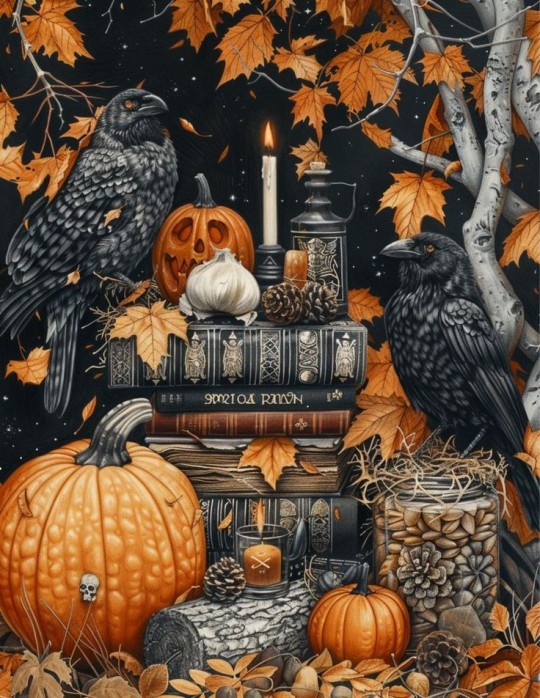
Bonus: Samhain Incense Recipe
• 2 parts Rosemary
• 1 part Frankincense
• 1 part Cinnamon
• 1 part Cloves
• 1 part Patchouli
• 1/2 part Sage
• 1/4 part Hyssop
• Pinch of Sea Salt
#magick#witch#satanic witch#lefthandpath#dark#witchcraft#spirit work#death witchcraft#chaos witch#samhain#wheel of the year#holiday#halloween#satanism#spirituality#spirits#ghosts#pagan witch#pagan community#witch community#witchblr
154 notes
·
View notes
Text
GRIMORE IDEAS
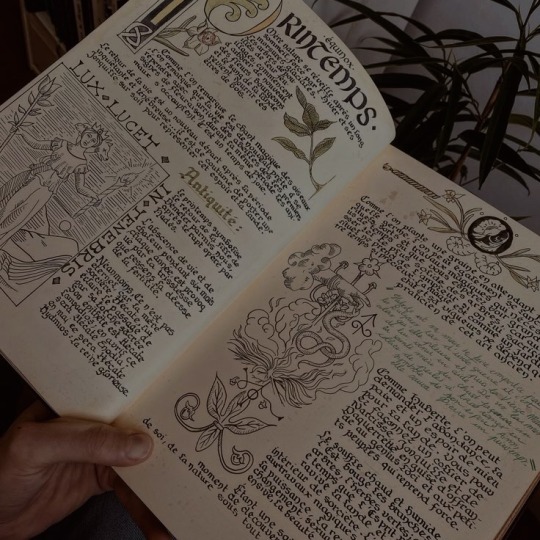
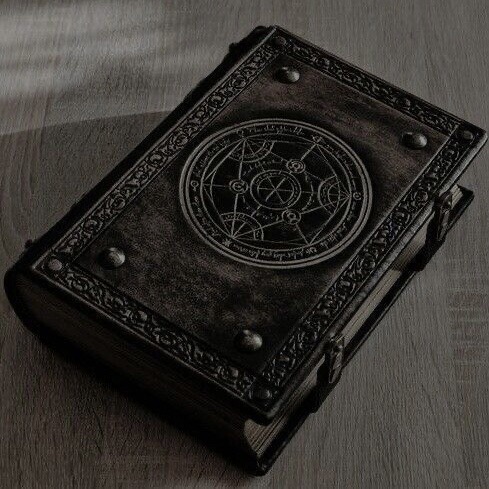
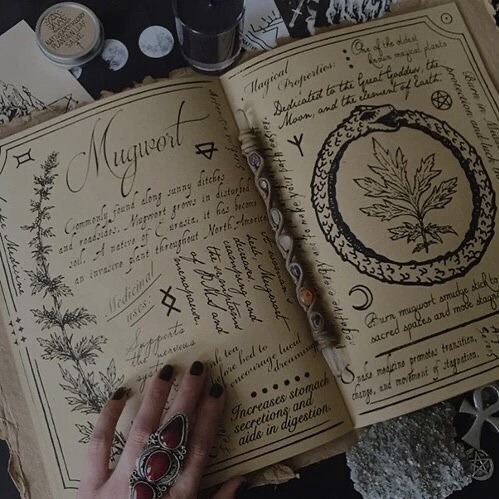
Start a lunar or dream diary.
Write spells.
Astrology meanings.
Write and record rituals
Tarot meanings.
Magickal correspondences.
Your natal chart info.
Herb names, uses, and/or properties.
Info about deities and entities.
Crystals names, uses, and/or properties.
Magickal food recipes.
Faeries.
Meditation techniques.
Full moon names.
Sigils.
Runes.
How to use a pendulum.
Wheel of the Year.
Essential oil uses.
How to scry.
Maiden, Mother, and Crone.
The Elements.
History of witchcraft.
The difference between jinxes, hexes, and curses.
Morning and night rituals.
How to celebrate/info about the Sabbats.
Types of salt and their properties.
Moon phases and their corresponding meanings.
Types of divination.
Planet correspondences.
Candle colour meanings.
How to draw and/or cast a circle, runes, and sigils.
Tools of the craft.
#fyp#fypシ#fypシ゚viral#fypage#fyppage#tumblr fyp#witchcraft#witches#witch#herbal witch#crystal witch#witchcore#witch community#learning witchcraft#grimoire#ideas#sabbats#divination#moon phases#norse runes#sigils#wheel of the year#faeries#crystals#herbs#spellwork#spells#tarot cards#astrology#information
2K notes
·
View notes
Text
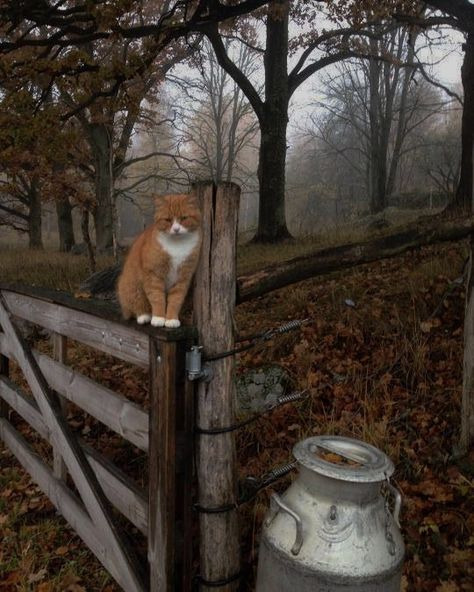
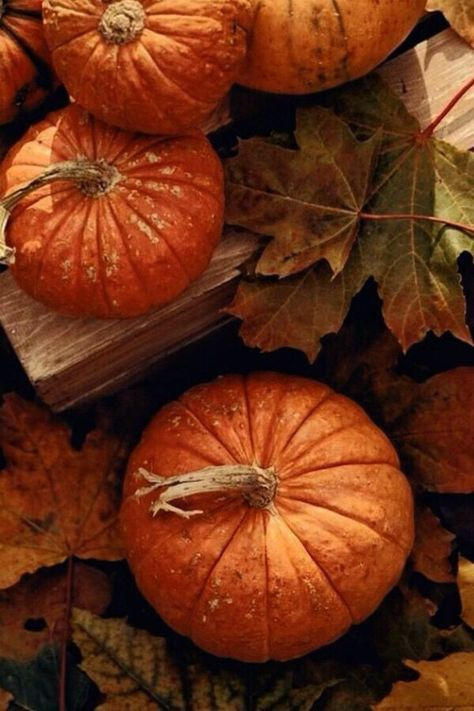
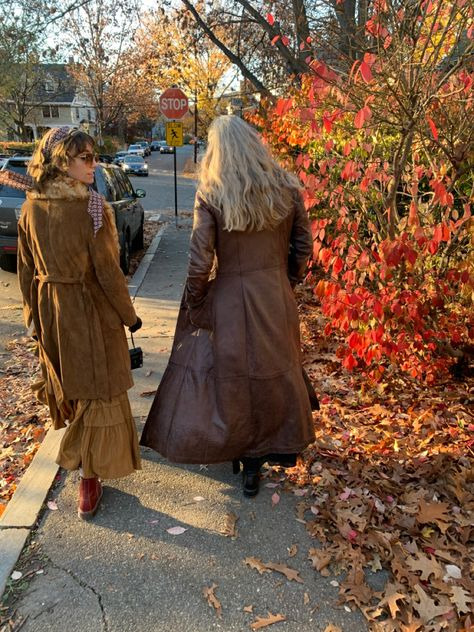



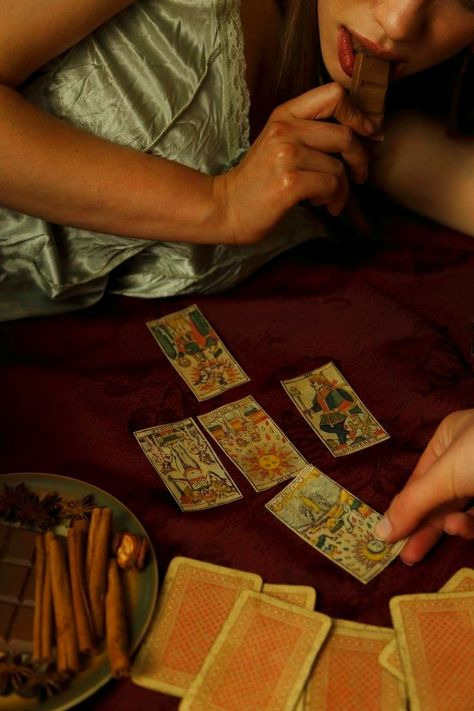
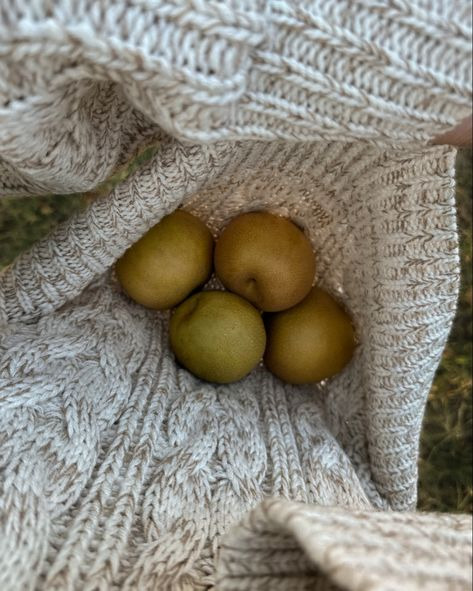

Blessed Mabon witches
#witchy#witchy things#witchyvibes#witches#witch#whimsigoth#whimsigothic#witchythings#whimsical#witchcraft#witch aesthetic#witch community#witchcraft community#witches of tumblr#magick#pagan#wheel of the year#moodboard#green witch#green witchcraft#harvest#harvest season#harvest festival#mabon#autumn#mabon sabbat#mabon altar#autumn equinox#mabon aesthetic#blessed mabon
2K notes
·
View notes
Text
web of wyrd: goals you should set to become your best self
this is just a theory of mine because these bubbles of the matrix should represent your higher self. i feel like it could work for the outside numbers too that changes yearly... anywho - this is not to say that you can't accomplish goals/resolution not listed in your category / under your energetic number nor that your efforts not listed in your selection don't make you a better person. this is simply what i believe people with these numbers would benefit from doing and how they can gain new found confidence in themselves.
paid reading options: astrology menu & cartomancy menu
enjoy my work? help me continue creating by tipping on ko-fi or paypal. your support keeps the magic alive!

1 - the magician
start a garden, work on passion project(s), read or write a business/self-help books, get a tarot/astrology/mediumship reading, study more tarot/astrology/mediumship, complete an art project, make your own soap or candles, start taking vitamins daily, declutter, learn to cook, learn to code, get car detailed, start journaling, do a paid class or certification course, start learning a new language, learn more about heritage, learn how to do nails at home, start a side hustle, learn to knit or crochet, learn how to manage a bonsai, or go to a concert
2 - the high priestess
delve deeper into spiritual practices, eat to support hormones, learn to bake, take a mixology course or find your signature drink (if you are of age), start or restructure a self-care routine, take a beach/cruise vacation, play brain games, learn to makes candles, go to a fondue experience, reset closet or revamp style, try a juice cleanse, take a cooking class, get a tarot/astrology/mediumship reading, practice tarot/astrology/mediumship abilities, or take self-defense class
3 - the empress
build up your crystal collection, reset closet or revamp style, go to an art museum, see a ballet or take a ballet class, sketch daily, practice makeup looks, keep a flower garden, get jewelry cleaned or revamp jewelry collection, save for real pearl/diamond/stone jewelry, learn to make your own candy/sweets, start a budget or emergency fund, reset closet or revamp style, save for a designer piece/accessory, start a new beauty/skincare routine, take a trip to a fancy restaurant, learn how to dried your own fruits, start a garden or try to grow something new in your garden, go to a concert/orchestra, read or write a poetry book, go to a play, start wearing lingerie (sometimes it's a pick me up to know you look good for yourself), get a boudoir photoshoot done, go to a vineyard or wine tasting (for those of drinking age), or take a dance class
4 - the emperor
start a new skincare routine, go on a rock climbing retreat, start going to the gym or become a personal trainer, try an adrenaline rush activity (skydiving, bungee jumping, etc), take a wood shop class, get more into your coffee - learn about sourcing/grinding beans, start taking better care of your eyes, start a hair care routine, start an oral health routine, start meditating, or start using time blocking or following a planner
5 - the hierophant
sketch daily, go on an architectural tour, start a beauty routine, go to a history museum, learn how to make pastries/sweets/candies, get your earrings cleaned professionally or save for a quality set, learn how to make sour dough, save for real pearl/diamond/stone jewelry, take piano/organ lessons or give them, take or give singing lessons, or take a class
6 - the lovers
get car detailed, get car license, do a bicycle marathon or learn how to rider a bike, read a set number of books, buy a quality briefcase / work tote, go on a day trip, start a gym membership or soulcycle classes, build up you crystal collection and learn how to use them, upgrade your desk set up, go for hand & foot message, learn how to do nails at home, start reading the newspaper (i recommend the new yorker), take a language classes, learn a new language, take a train trip, learn how to better your communication with others, or start talk therapy
7 - the chariot
start a garden or try to grow something new in your garden, learn how to bake or learn how to bake something new, start a new beauty routine, go on a boat trip / cruise, get car detailed, try a juice cleanse, upgrade glassware, declutter, invest in home, stay at a hotel or bed & breakfast, upgrade kitchenware, go on a lake trip, go tubing, invest in pearls, invest in real estate / land, try a new restaurant, get silver jewelry cleaned professionally, shop your pantry, go on a trip, or start journaling your intentions / bullet journaling
8 - strength
go to an amusement park, work on or finish a passion project, take ballroom dancing classes, learn about tea and tea leaves, learn to read tea leaves, start playing a new game or design a new game, practice vulnerability, go to the movie theater, start a flower garden, or get a pet
9 - the hermit
get a pet, organize bookshelves, try a juice cleanse, upgrade clothing or declutter closet, start an oral health routine, start journaling more consistently, learn more about emergency preparedness, invest in emergency preparedness, learn to cook something new, invest in new dining ware (new plates/bowls, cups / glassware, silverware, etc), try a food subscriptions (home chef, hello fresh, pickle of the month club, bokksu japanese snack box, etc), take care of a bonsai, take supplements, learn to knit or crochet, start an herb garden, learn to dry your own herbs, take a one way trip to anywhere, or go on a hiking trip
10 - wheel of fortune
learn about different incenses/herbs, practice or take a class in archery, plant a tree, invest in land, learn how to dry berries, start a budget, learn how to budget, start going to a gym / exercising, expand religious/spiritual/philosophical knowledge, learn how to play a new card game, learn how to spin your own wool (then you can move to weaving, crocheting, and/or knitting), learn how to make your own clothing, buy a luxury coat, take a trip to a country or place you have never been, start an oral health routine, take an etiquette class, learn about the customs of other countries/cultures, eat more fruit, get a beehive / harvest your own honey, start taking royal jelly, take a horseback riding lesson, upgrade shoes / shoe collection, support spiritual practices / keep learning about what you believe in / trust, or start practicing a positive mindset
11 - justice
go to a ballet or an art gallery, start using or invest in an air purifier, learn how to take care of house plants, buy a house plant, take a spa day, go to a spa, reset your cosmetics (please clean your brushes and sponges), wearing lingerie (sometimes it's a pick me up to know you look good for yourself), get a boudoir photoshoot done, organize your closet, declutter your closet, start a capsule wardrobe, learn how to make pastries/sweets, invest in diamonds, propose to your lover, buy a dress that makes you feel good and take yourself on a date (fancy diner and a play/opera/ballet), go to a fashion show or exhibit, buy yourself flowers, start a flower garden, invest in a luxury chair (a chaise, reading chair, gaming card - whatever your thing is, justice person), declutter your jewelry, invest in luxury jewelry, get your jewelry professional cleaned, go to a concert, read or write a poetry, buy yourself chocolate dipped strawberries, get hair extensions (i know you want to lol), do logic puzzles, or go to an escape room
12 - the hanged man
take a mixology course or find your signature drink (if you are of age), learn how to better decode angel numbers, look into / practice natural medical remedies, take a ballet class, go to a ballet, revamp your self-care routine, go on a beach vacation, try a new tea or coffee, learn more about tea or coffee, practice photography or start a photography side hustle, take a dance class, read or write a smutty/romance/fantasy book, make a fairy garden, get a tarot/astrology/mediumship reading, practice your tarot/astrology/mediumship abilities, start budgeting, try a new makeup look or practice your makeup skills, go to a concert, paint something, read or write a poetry book, take a swim class, make a poppet, or practice meditation
13 - death
start practicing or expanding homeopathic cures and remedies, learn more about meat sourcing, purchase/invest in half a cow or pig, learn how to cook and trim meats, try to be a vegetarian or a vegan for a month or longer, do a colon cleanse, read a philosophy of death book, expand your knowledge of magic, try a new period product, learn more about poisonous plants, make a frog pond, buy a scorpion/snake/snake, gift someone something unexpectedly, or declutter your space
14 - temperance
go on a hunting trip, take an archery class, read a book on religion or philosophy, start a devotional journal, read the book of your core religion or philosophy, purchase a book on dream meanings and keep a dream journal to reflect on your dreams, take a certification course or college class, take a horseback riding lesson, go on a horse drawn carriage ride, do logic puzzles, or learn how to better decode angel numbers
15 - the devil
invest in a fan or air conditioning unit, if you have the land for it - buy a cow/horse/goat, learn how to use kinetic tape, start dry brushing, invest in diamonds / diamond jewelry, propose to your significant other, invest in a luxury clock or watch, practice/learn better nail care, invest in room darkening curtains, invest in and use a happy lamp, start a lotion/cream skin routine, learn how to knit or crochet, invest in hair products (extensions, shampoo subscription, etc), start a hair routine, invest in leather fashion-ware, start a garden or try to successfully grow something new in your garden, invest in an ice maker or ice molds, or try a juice cleanse
16 - the tower
practice yoga, take an acrobatic/gymnastic class, learn about and practice homeopathic cures and remedies, take a first-aid course, learn how to bake, learn how to season and marinate your meats, get a bad haircut or shave your hair off, learn how to use a straight razor, learn knife skills, get a custom metal works done, take boxing lesson, go to a boxing match or monster truck duel, learn more about meat sourcing, purchase/invest in half a cow or pig, learn how to cook and trim meats, try to be a vegetarian or a vegan for a month or longer, take a wood shop class, start a cactus/succulent garden, buy a cactus or succulent, learn how to cook something from scratch (and be okay with failing at it multiple times), invest in pocket knife / knife set /leatherman / multitool and learn how to use it, invest in a tool kit, read or write a comic or graphic novel, take a mixology course or find your signature drink (if you are of age), listen to more rock music, invest in a vinyl, go to a rock concert, maintain a pepper plant, or build a lego kit
17 - the star
learn how to make friendship bracelets, invest in a fan or air conditioning unit, take a flight lesson, use compression stockings/socks, take an architectural tour, read or write an astrology reading, get car detailed, get a club memberships, invest in an electronic device brand, collect movies, watch a new movie, invest in a camera, film a short film or practice photography, start a photography side hustle, practice shadow work, get rid of unused subscriptions, take an acting class, read or write a book on health or mental health, or read or write a book on positivity
18 - the moon
make a piece of abstract art, take a mixology course or find your signature drink (if you are of age), pay a fish, visit an aquarium, go on a fishing trip (for the dads), watch a fishery documentary, read or write a book of conspiracy theories, learn how to read a crystal ball, buy a tarot/astrology/mediumship reading, practice your tarot/astrology/mediumship abilities, invest a camera, practice photography or start a photography side hustle, read or write poetry book, attempt hydroponics, practice bluffing, take an acting class, invest in new shoes, start using a sleeping eye mask, invest in silk pillow cases, buy yourself new quality bed sheets, start using a bonnet, invest in a typewriter, practice shadow work, buy a puppy, or purchase a book on dream meanings and keep a dream journal to reflect on your dreams
19 - the sun
read an autobiographical books, take ballroom dancing lessons, start an oral health routine, try a new card game, make your own chocolates, take an artistic/creative class, get new jewelry or an engagement ring, buy yourself flowers, start a flow garden, start a herb garden, learn how to dry your own herbs, go to a race of some sort (cars, horse, etc), invest in sporting equipment, buy and maintain an ivy plant, take a pottery class, or work on your passion project / hobbies
20 - judgment
buy an ant farm, practice astral projection, learn more about emergency preparedness, invest in emergency preparedness, practice illusions and slight of hand, buy and learn about poisonous plants, read the divine comedy, do a puzzle, buy a bubby, or wearing lingerie (sometimes it's a pick me up to know you look good for yourself)
21 - the world
start a garden or try to grow something new, take or give a guitar lesson, invest in air conditioning or fan, take an architectural tour, make your own teddy bear (literally sow one), buy a pair of quality/luxury boots, keep a calendar or planner, practice sun protect / use sunblock products, convert to wooden kitchen supplies (cutting board, spoon, etc), buy a luxury carpet, make a clay house guardian, invest in a luxury clock or watch, use compression stockings/socks, collect coins, learn how to use kinetic tape, build up your crystal collection, start a budget tracker, start a lotion for dry skin routine, learn to knit/crochet, start a hair care routine, invest in an ice machine or ice making trays, learn to make ice cream, take a pottery class, invest in real estate or land, keep a zen sand garden, or invest in a sculpture
22 - the fool
take flight lessons, take a flight to anywhere, get car detailed, get an astrology reading, practice your astrology reading abilities, learn how to ride a bike or do a bike marathon, go to the movie theater, invest in a luxury clock or watch, start a club memberships, take a train ride, take motorcycle classes, do something impulsive, filming or recording something and upload it online, learn to cross stitch / knitting / crocheting, invest in a camera, practice photography, watch a new movie / tv show, invest in a new tv, or take a class
have ideas for new content? please use my “suggest a post topic” button!
return to nox's guide to metaphysics
return to the masterlist of the web of wyrd
© a-d-nox 2023 all rights reserved
#astrology#astro community#astrology tumblr#tarotdaily#tarot witch#tarot art#daily tarot#rider waite tarot#tarot deck#tarot reading#tarot cards#tarot#tarotblr#tarotcommunity#wyrd web#web of wyrd#matrix of destiny#matrix of fate#magician#empress#the high priestess#the empress#emperor#the heirophant#lover#lovers#the charioteer#strength#justice#wheel of fortune
696 notes
·
View notes
Text
June 2024 witch guide
Full moon: June 21st
New moon: June 6th
Sabbats: Litha/Summer Solstice- June 20th
June Strawberry Moon
Known as: Aerra Litha, Birth Moon, Blooming Moon, Brachmanoth, Dyad Moon, Egg Laying Moon, Green Corn Moon, Hatching Moon, Hoer Moon, Honey Moon, Lovers Moon, Mead Moon, Moon of Horses, Moon of Making Fat, Partner Moon, Rose Moon & Strong Sun Moon
Element: Earth
Zodiac: Gemini & Cancer
Nature spirits: Sylphs & Zephyrs
Deities: Aine of Knockaine, Bendis, Cerridwen, Green Man, Ishtar, Isis, Neith & Persephone
Animals: Butterfly, frog, monkey & toad
Birds: Peacock & wren
Trees: Maple & Oak
Herbs: Dog grass, meadowsweet, moss, mugwort, parsley, skullcap & vervain
Flowers: Lavender, orchid, tansy & yarrow
Scents: Lavender & lily of the valley
Stones: Agate, Alexandrite, cat's eye, chrysoberyl, emerald, fluorite, garnet, moonstone, ruby & topaz
Colors: Gold, green, orange & yellow
Energy: Abundance, balance, change of residence, communication, decision making, education, family relations, full & restful energy, love, marriage, prosperity, positive transformation, prevention, protection, public relations, relationships, responsibility, strength, tides turning, travel & writing
While strawberries certainly are a reddish-pink color and are roundish in shape, the origin of the name “Strawberry Moon” has nothing to do with the Moon’s hue or appearance.
• June's full Moon is typically the last full moon of spring or the first of summer. The June Full Moon will be extraordinary. For the first time since 1985, Full Moon happens precisely on the summer solstice, when the Sun is highest up. Because the Full Moon is always opposite the Sun, this year, you will see that the Moon is 10 widths lower on the horizon than the Sun ever is.
This “Strawberry Moon” name has been used by Native American Algonquian tribes that live in the northeastern United States as well as the Ojibwe, Dakota, and Lakota peoples to mark the ripening of “June-bearing” strawberries that are ready to be gathered. The Haida term Berries Ripen Moon reflects this as well. As flowers bloom and early fruit ripens, June is a time of great abundance for many.
Litha
Known as: Alban Heruin, Summer Solstice & Whit Sunday
Season: Summer
Element: Fire
Symbols: Besom, fairies, God's eyes, sunflowers & symbols of the sun
Colors: Blue, gold, green, orange, red, tan & yellow
Oils/Incense: Cinnamon, frankincense, heliotrope, lavender, lemon, lily of the valley, mint, musk, myrrh, orange, orange pine, pine, rose, saffron, sandalwood & wisteria
Animals: Cattle, crab, horse & octopus
Birds: Goldfinch, kingfisher, meadowlark, owl, robin & wren
Mythical: Fairies
Stones: Bloodstone, diamond, emerald, jade, lapis lazuli & tiger's eye
Food: Ale, bread, cheese, edible flowers, garden fresh vegetables & fruit, lemons, meade, milk, oranges, pumpernickel bread, summer squash & wine
Herbs/Plants: Anise, basil, betony, cinquefoil, copal, elder, fennel, fern, frankincense, galangal, hemp, ivy, larkspur, lemon, lemon balm, mistletoe, mugwort, mullien, nettle, orange, orpin, plantain, rue, saffron, sandalwood, St.John's wort, thyme, verbena, vervain, wild thyme & ylang-ylang
Flowers: Carnation, chamomile, daisy, heather, heliotrope, honeysuckle, lavender, lily, marigold, orchid, rose, wisteria & yarrow
Trees: Elder, holly, laurel, linden, oak & pine
Goddesses: Amaterasu, Aine, Anahita, Dea, Cerde, Dag, Dana, Eiru, Fenne, Gwydion, Kupala, Mabd, Phoebe, Skhmet & Sul
Gods: Apollo, Baal, Balder, Bel, The Dagda, Donnus, El, The Green Man, Helios, Huon, Jupiter, Llew, Loki, Lugh, Maui, Mithras, Oak/Holly King, Ogmios, Ra, Surya, Thor & Zeus
Issues, Intentions & Powers: Agriculture, changes, divination, ending, fertility, life, light, manifestation, power, purpose, strength, success & unity
Spellwork: Fire & water magick
Activities:
• Charge and cleanse your crystals in the solstice sun
• Make Sun water
• Create crafts with natural elements such as flowers
• Burn a paper with things that no longer serve you or that you are trying to let go
• Invite friends & family over for a bonfire and/or feast
• Gather & dry herbs for the upcoming year
• Clean, decorate & cleanse your altar with summer symbols
• Brew some sun tea
• Take a ritual bath/shower with flowers
• Make your own sun dial
• Craft a door wreath out of flowers & herbs
• Enjoy some sunrise/sunset yoga
• Volunteer at a food kitchen or animal shelter
• Plant trees (especially ones that may provide fruit or berries to feed the wildlife)
• Watch the sunset & say a blessing to nature
• Make flower infused anointing/spell oils
• Eat fresh fruits & berries
• Participate in a handfasting
• Create shadow art
The history of Litha reveals its deep connections to ancient agricultural societies & their reliance on the sun's power. Celebrated as part of the Wheel of the Year, Litha symbolizes the balance between light & darkness. Throughout history customs such as bonfires, herb gathering & the construction of sunwheels have marked this festival. Today, Litha continues to be celebrated by various communities, with gatherings at sacred sites & private rituals in natural settings. It serves as a reminder of our connection with nature and the cycles of life.
• The traditions of Litha appear to be borrowed from many cultures. Most ancient cultures celebrated the summer solstice in some way such as the Celts celebrated Litha with hilltop bonfires & dancing. Many people attempted to jump over or through the bonfires for good luck. Other European traditions included setting large wheels on fire & rolling them down a hill into a body of water.
Litha is often associated with Midsummer, a celebration that extends beyond the pagan and Wiccan traditions. Midsummer festivities are observed in many cultures around the world, including Scandinavian countries where it holds a prominent place in their cultural heritage. Midsummer dances, bonfires, & feasts are integral parts of these celebrations, often accompanied by folklore and traditional rituals that honor the sun's energy and the abundance of nature during this time.
The summer solstice is the longest day of the year & in some traditions, Litha is when The Sun(The God) is symbolically at it's peak time of power & the World will soon be ripe to harvest. It is also when The Goddess is pregnant with The God who is to be reborn at Yule.
• In the Northern Hemisphere the Summer Solstice occurs when the Sun reaches its highest and northernmost points in the sky. It marks the start of summer in the northern half of the globe. (In contrast, the June solstice in the Southern Hemisphere is when the Sun is at its lowest point in the sky, marking the start of winter.)
Some also believe the history & spirit of Litha revolve around two deities, The Oak King & The Holly King. In Wiccan and Neo-Pagan traditions, each King rules the Earth for half of the year. From Yule to Litha, the Oak King rules. On Litha, the two battled for the crown and it is then that the Holly King triumphs. The Holly King will rule through fall until Yule, and the cycle will begin again.
Related festivals:
• Vestalia- June 7th -15th
Was a Roman religious festival in honor of Vesta, the goddess of the hearth & the burning continuation of the sacred fire of Rome. It was held from 7–15 June & was reserved as a women's-only event. Domestic & family life in general were represented by the festival of the goddess of the house & of the spirits of the storechamber — Vesta & the Penates .
On the first day of festivities the penus Vestae (sanctum sanctorum of the temple of Vesta which was usually curtained off) was opened for the only time during the year, at which women offered sacrifices. As long as the curtain remained open, mothers could come, barefoot and disheveled, to leave offerings to the goddess in exchange for a blessing to them and their family.
For the last day, the penus Vestae was solemnly closed, the Flaminica Dialis observed mourning & the temple was subjected to a purification called stercoratio: the filth was swept from the temple and carried next by the route called clivus Capitolinus and then into the Tiber.
Sources:
Farmersalmanac .com
Llewellyn's Complete Book of Correspondences by Sandra Kines
Wikipedia
A Witch's Book of Correspondences by Viktorija Briggs
Encyclopedia britannica
Llewellyn 2024 magical almanac Practical magic for everyday living
#summer solstice#strawberry moon#litha#midsummer#witchblr#wiccablr#paganblr#witch community#witchcraft#witches of tumblr#witch guide#wheel of the year#sabbats#traditional witchcraft#witch tumblr#witch tips#beginner witch#baby witch#GreenWitchcrafts#moon magic#witchcore#grimoire#book of shadows#Spellwork#spellbook#witch#witchyvibes#june 2024#witchlife#witch friends
733 notes
·
View notes
Text

sketches & screenshot studies for my Barret gold saucer date rewrite
#barret wallace#cloud strife#ff7r#twirling my hair thinkin about the effects these 2 have on each other#they both exude much bravado in their own way. its like speaking the same language#the language of bullshit#and seeing thru it#ya know#the night before they blow the reactor when barret was telling cloud all the names n quirks n hopes n dreams of the avalanche team#cloud's first glimpse of what loving community can look like#that time barret marched right into hojos business and aimed the gun at his face#had to be cathartic for cloud#bottom row is the answer to 'what if on the sky wheel date when barret says SOMETIMES YA JUST GOTTA GOOOO FOR IT.... he DID?'
342 notes
·
View notes